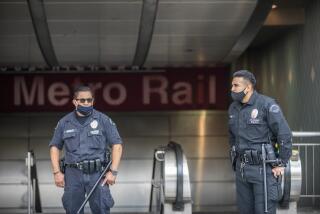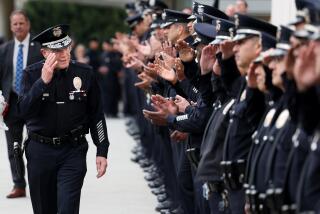LAPD expands community policing program, appoints Black female deputy chief
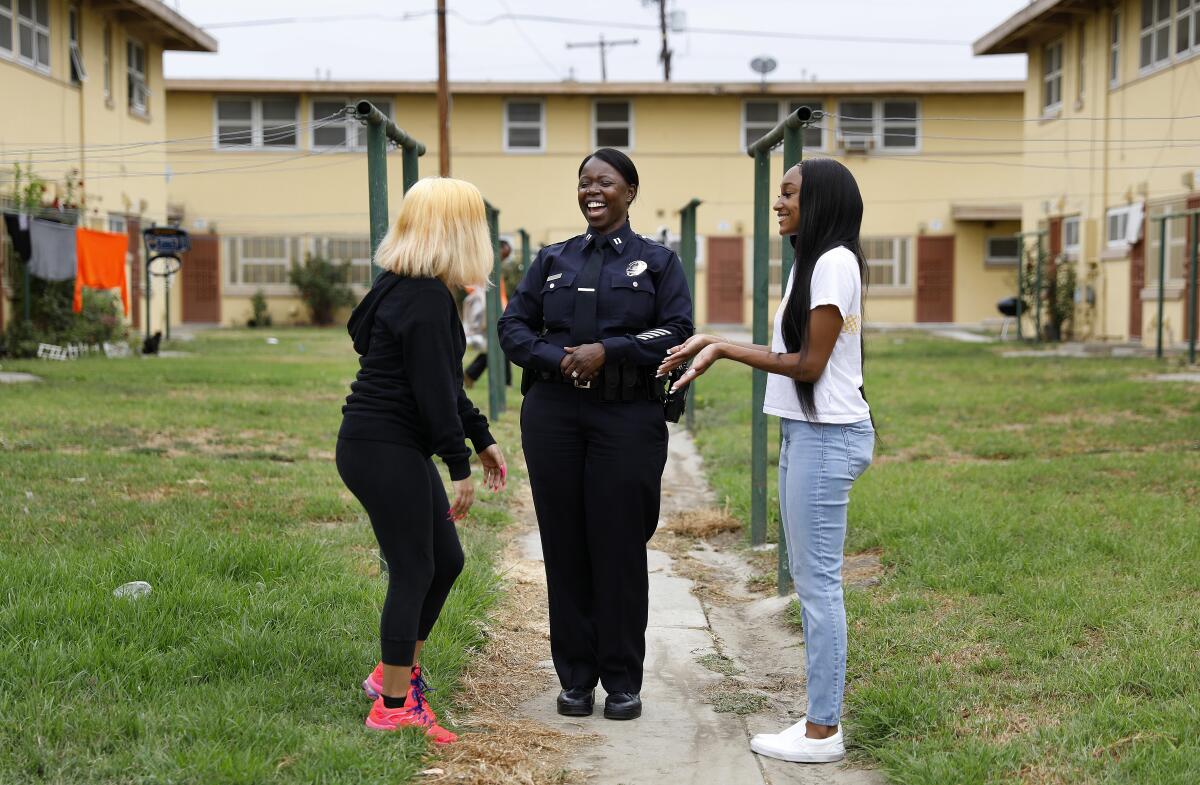
As part of a reimagining of law enforcement after the killing of George Floyd, the Los Angeles Police Department is expanding its signature community policing program.
The Community Safety Partnership, which began in 2011 in some of the city’s most troubled housing developments, is credited with reducing violent crime and improving relationships with residents through initiatives such as youth football teams.
The expansion of CSP comes as other LAPD units are being closely scrutinized for potential cuts. Responding to days of street protests calling for resources to be shifted from policing to programs that help Black and Latino residents, the City Council recently slashed $150 million from the LAPD budget.
Proponents of CSP say its expansion will transform the culture of the 10,000-officer LAPD, where success has traditionally been measured by arrests and crime statistics. Now, building trust with local residents will be paramount, Chief Michel Moore said.
CSP will now have its own bureau within the LAPD, headed by Emada Tingirides, a Watts native who was one of the program’s founding officers. She will become the LAPD’s second Black female deputy chief.
Along with other reforms, such as tightening use-of-force policies, the CSP expansion will ensure that the community has a greater say in how it is policed, Mayor Eric Garcetti said.
“It’s a dramatic step in that ... we’re moving squarely towards the core of our policing philosophy — a model that is about co-owning public safety,” said Garcetti, who worked with Moore and others to spearhead the change.
The program will eventually expand beyond the current nine neighborhoods and 100 officers. For now, the focus will be on solidifying its existing operations. A 10th CSP site will likely be identified in the next year, Moore said.
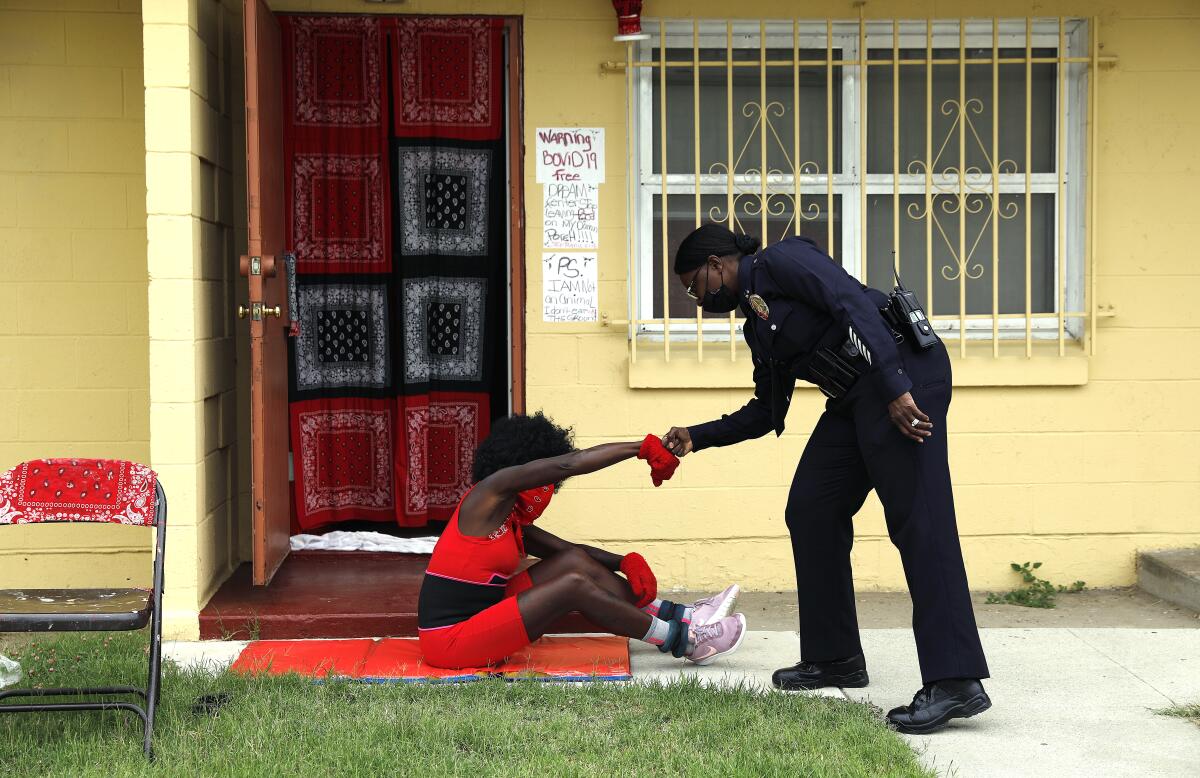
The new CSP bureau will have a full complement of command staff transferred from elsewhere in the department, as well as one civilian commander. But initially, it will not have its own budget. In recent years, new CSP sites have largely been funded by private donations.
The program now has a strong command structure that will channel resources from elsewhere in the department, Garcetti said.
Tingirides’ promotion from captain was highly unusual because she skipped several rungs on the command ladder. The department’s 11 deputy chiefs are two ranks below the chief of police.
Moore said he promoted Tingirides “to signal to the organization that it wasn’t going to be bound by tradition or protocols, that it was going to be the best person, I believe, for the best position at a critical moment — as America and really all of the nation is looking at policing and certainly here in Los Angeles looking at the LAPD.”
“What’s our future? I think CSP defines our future,” Moore added.
For those who have called for the defunding of the LAPD, CSP puts officers in the very spots — working with young people, delivering social services — where they should not be.
“This is not a program that needs to be operated by armed, sworn police officers,” said Paula Minor of Black Lives Matter L.A. Minor also questioned the program’s use of private funding, including from the Ballmer Group, founded by Los Angeles Clippers owner Steve Ballmer.
Connie Rice, a civil rights attorney who co-founded CSP with then-Chief Charlie Beck, called the new bureau and command structure “a bold commitment to do a different kind of policing.”
Now, she said, an ambitious officer can rise through the ranks entirely within CSP, steeped in “guardian” policing instead of the traditional warrior mentality.
“It’s the opposite of LAPD’s core culture,” Rice said. “If you’re a CSP cop, you’re there to serve. ... You understand what people face, the problems, the fears. ... And you ask people, ‘How do you want us to keep you safe?’ You don’t just impose it. ‘What do you want us to fix? How do you want us to help you fix it?’”
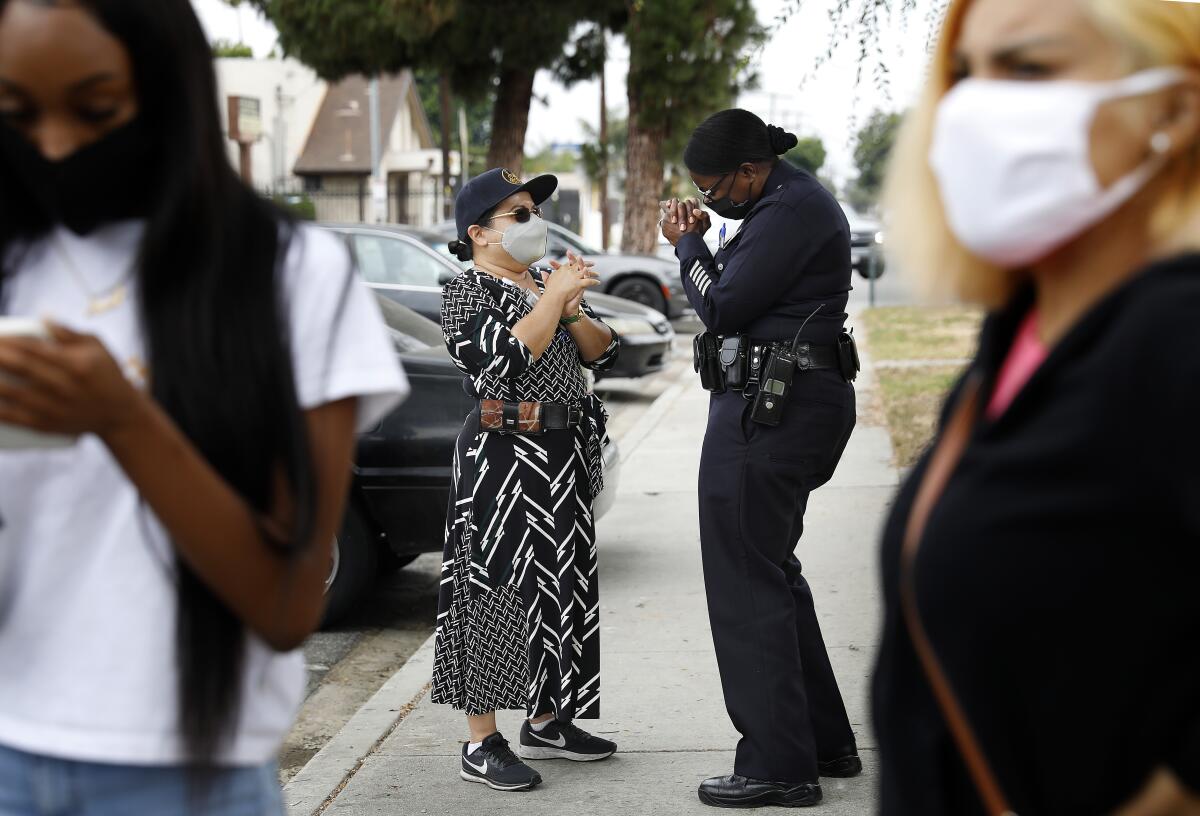
As Rice and Beck launched CSP nearly a decade ago, they became aware of Tingirides’ work as a community relations sergeant in Watts. With her husband, Phil Tingirides, then the captain of Southeast Division, she was bringing police officers into local schools to read to kids — a revolutionary concept at the time.
At the State of the Union address in 2015, President Obama honored the Tingirideses for their community policing work.
“The CSP concept is not just a police concept. That’s why the title is Community Safety Partnership,” said Emada Tingirides, a 25-year LAPD veteran. “It doesn’t have the word ‘police’ in it, because it takes more than us to address the systemic violence in a community, to address the biases that the community has for law enforcement and then collectively looking at a way to heal the trauma in communities and build the relationships with the community and the police.”
CSP officers commit to the assignment for five years, so they can plant roots in the neighborhood. Nearly a quarter of the LAPD’s 100 CSP officers are Black, and most of the rest are Latino, according to department statistics.
A report by UCLA researchers released in May found that crime rates in two CSP housing developments, Jordan Downs and Nickerson Gardens, were lower than in demographically similar neighborhoods that were not part of the program. Most residents surveyed by the researchers had positive impressions of CSP and said the officers generally got along well with people.
But the report noted a lack of consistency and recommended a slate of reforms, including the creation of a separate bureaucracy.
“Creating a bureau in the LAPD is a seismic shift,” said Jorja Leap, a UCLA professor and coauthor of the report. “I do think it indicates this chief’s intention not to reform but to transform — and there is a radical difference.”
Harvard Park, which in 2017 became the first CSP site outside of a housing development, went from eight homicides in 2016 to none in 2019. CSP officers have helped start a walking club and a healthy eating club and play in a basketball league with community members.
“We’re building toward a day where they’re not needed in the intensity they are now,” said Marqueece Harris-Dawson, a city councilman who represents Harvard Park and other parts of South L.A. “We don’t go from where Harvard Park was to not needing a police presence in a period of three or four years.”
With Harris-Dawson, Councilman Joe Buscaino has introduced a motion calling for savings elsewhere in the LAPD budget to be redirected to CSP. He also wants to see the LAPD expand its senior lead officer program, which assigns officers to neighborhoods to solve quality-of-life issues.
Buscaino, a former LAPD officer whose district extends from San Pedro to Watts, wants new officers to do a stint in CSP, “so they get the mind-set, they understand it, they embrace it.”
“And that for me is true reform, when it comes to building trust,” he added.
More to Read
Sign up for Essential California
The most important California stories and recommendations in your inbox every morning.
You may occasionally receive promotional content from the Los Angeles Times.

